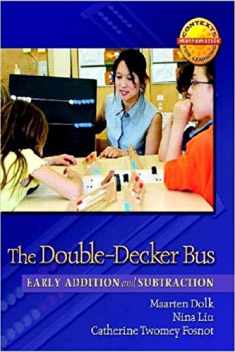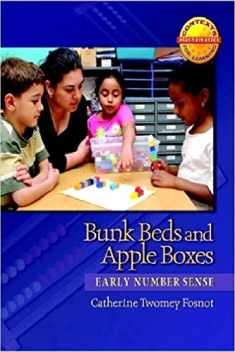
Organizing and Collecting: The Number System (Context for Learning Math)
ISBN-13:
9780325010113
ISBN-10:
0325010110
Edition:
1
Author:
Catherine Twomey Fosnot, Maarten Dolk, Nina Liu
Publication date:
2008
Publisher:
FirstHand
Format:
Paperback
80 pages
Category:
Education Theory
,
Certification & Development
,
Schools & Teaching
FREE US shipping
Book details
ISBN-13:
9780325010113
ISBN-10:
0325010110
Edition:
1
Author:
Catherine Twomey Fosnot, Maarten Dolk, Nina Liu
Publication date:
2008
Publisher:
FirstHand
Format:
Paperback
80 pages
Category:
Education Theory
,
Certification & Development
,
Schools & Teaching
Summary
Organizing and Collecting: The Number System (Context for Learning Math) (ISBN-13: 9780325010113 and ISBN-10: 0325010110), written by authors
Catherine Twomey Fosnot, Maarten Dolk, Nina Liu, was published by FirstHand in 2008.
With an overall rating of 3.7 stars, it's a notable title among other
Education Theory
(Certification & Development, Schools & Teaching) books. You can easily purchase or rent Organizing and Collecting: The Number System (Context for Learning Math) (Paperback, Used) from BooksRun,
along with many other new and used
Education Theory
books
and textbooks.
And, if you're looking to sell your copy, our current buyback offer is $0.83.
Description
Organizing and Collecting: The Number Systemis one of eight units in the Contexts for Learning Mathematics' Investigating Number Sense, Addition, and Subtraction (K-3) This unit begins with the story of the Masloppy family-an endearing, large family that finds it difficult to keep track of things. Everyone is forever losing, misplacing, and looking for things. One of the children, Nicholas, decides to sort, organize, and take inventory of things in the house. He counts and bundles materials and labels containers and baskets, and life in the Masloppy household is smoother thereafter. The idea of taking inventory is brought to the classroom, where children work to count and label baskets of supplies and materials. The discussion focuses on organizing in groups and skip counting, then specifically on groups of ten. The concept of place value is developed as the children pack objects into groups of ten and study patterns in the data. There are opportunities to deepen their understanding by packing in fives and playing games that focus on groups of ten, and there are minilessons that use the ten-frame as a visual model of five and ten. (The structure of the ten-frame is similar to that of the arithmetic rack, which is discussed in The Double-Decker Bus (previous unit).Both units use five and ten as landmark numbers: the arithmetic rack has four groups of five arranged in two rows of ten, the ten frame has two groups of five. The ten-frame is used in this unit because it resembles the context of packing more closely.) In the second week the inventory context is extended to include ordering more classroom supplies as a way to develop and support addition strategies, which include jumping to friendly numbers (multiples of ten) and jumping by ten. As children pack and count groups of items, they begin to unitize-to count groups and objects at the same time. Children develop an understanding of place value as they construct the idea that the number of packs and loose items is related to the total number of objects and that the numbers change when items are added to make full packs or when a pack of ten is added. The game Collecting Stamps and its variations are included in this unit. These can be played throughout the year as a way for children to develop place value and addition strategies. The game and its variations extend composing and decomposing strategies while promoting understanding of equivalence-for example, representing 26 + 8 as equal to 26 + 4 + 4. To learn more visit http://www.contextsforlearning.com


We would LOVE it if you could help us and other readers by reviewing the book
Book review

Congratulations! We have received your book review.
{user}
{createdAt}
by {truncated_author}




